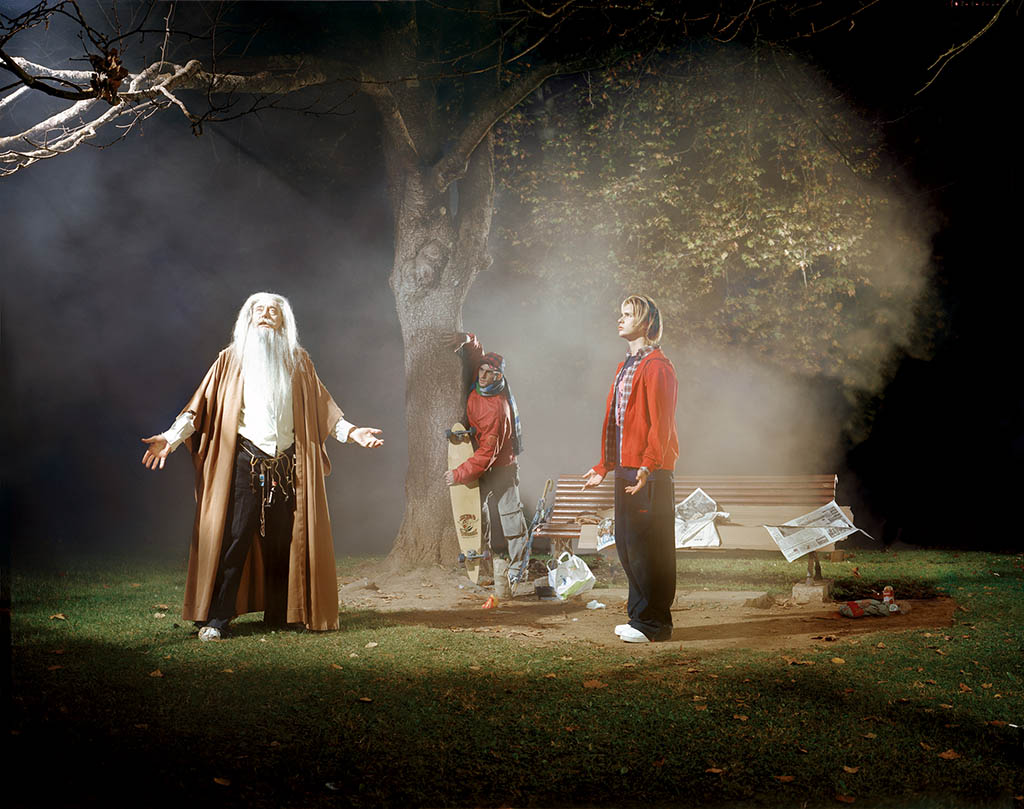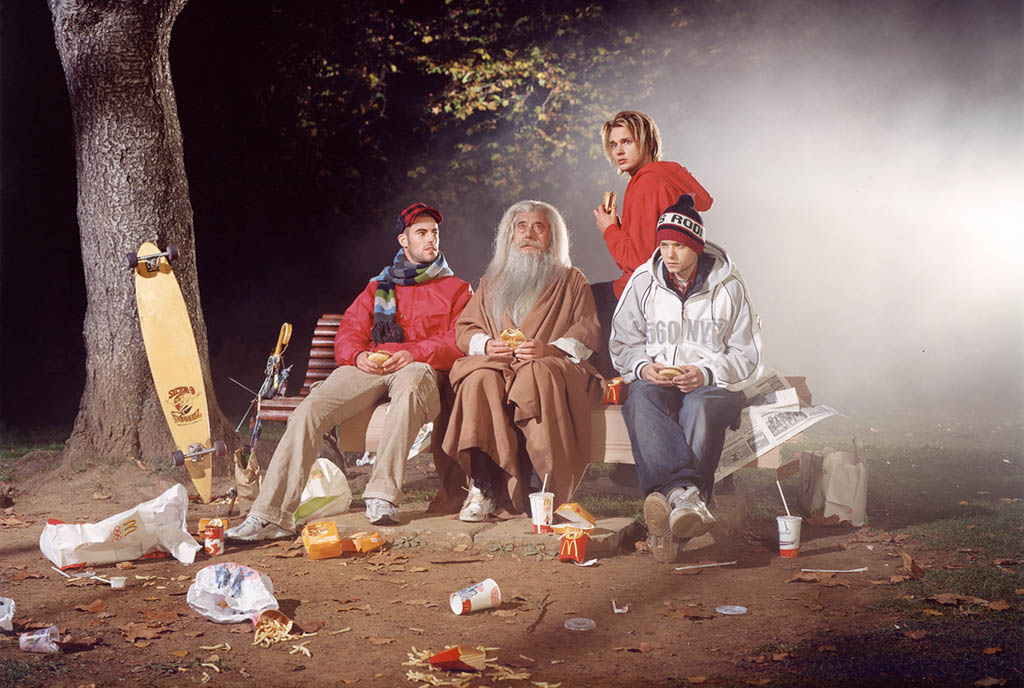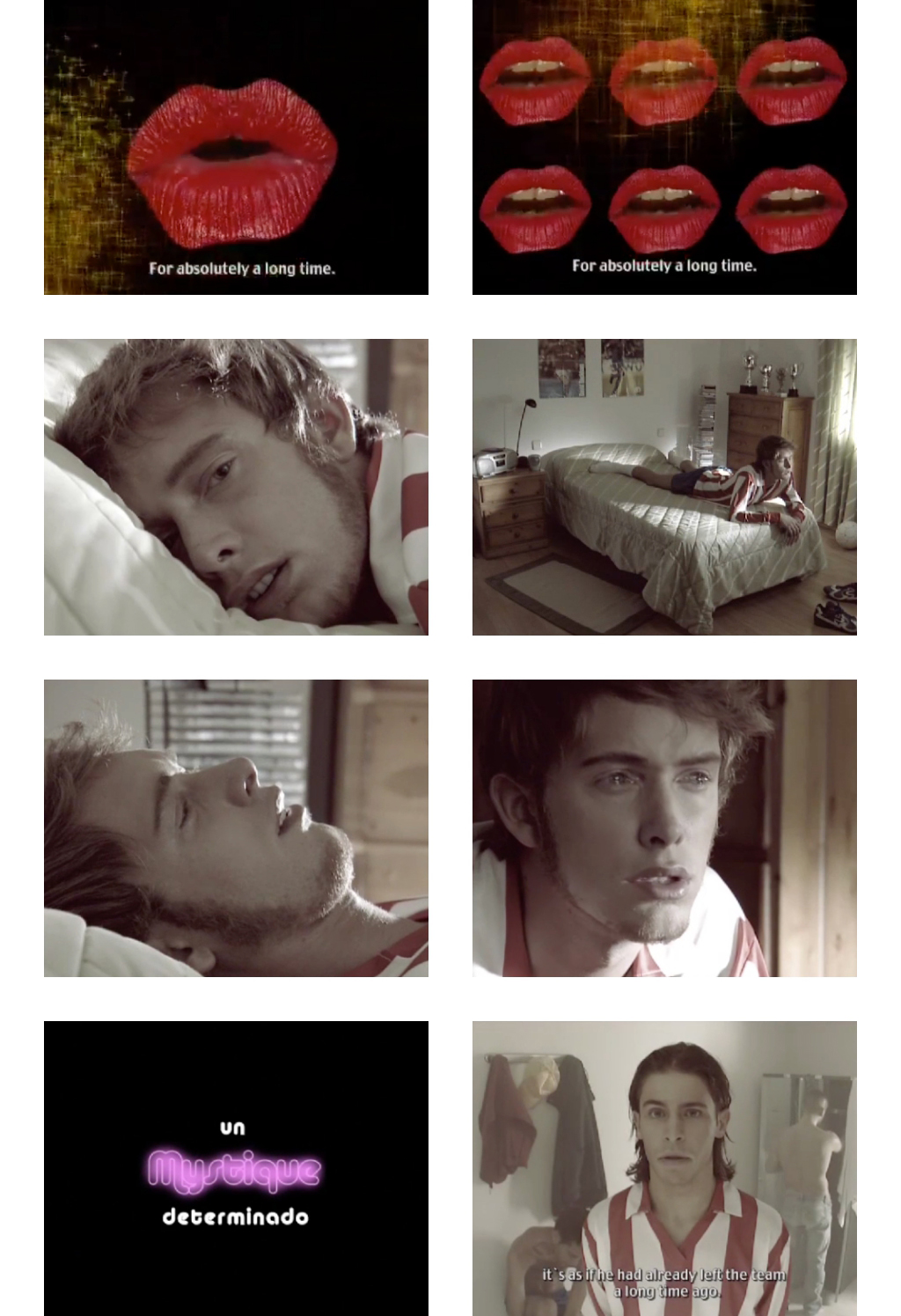CARLES CONGOST
Gloria

Carles Congost, The Revolutionary I, 2004 – C Print on alluminium d-bond, 48 x 62 inch
.
OPENING: Saturday, 13 March 2017 – h 6.00 pm
15 March 2005 – 08 June 2005
.
Text by ALESSANDRA PACE
Carles Congost, born in 1970 near Gerona in Catalonia, is fast becoming one of the most important figures on the young Spanish art scene. Trained as a painter (Academy of Barcelona), he soon mastered photography and video and adopted them as his main techniques. In addition, he creates the sets and costumes, writes the lyrics for the songs and composes the soundtrack for his productions.
The formats and working methods that the artist favours are borrowed from the cinematographic and television industries: from talk shows and soap operas, video clips, musicals and psycho-thrillers. He recently made a commercial video for the Spanish star Alaska’s new album, which was in the MTV top ten for two months. However, Carles Congost’s main trait is that he is able to adapt these genres, contaminate them with themes and aesthetics from the world of art, push them towards paradoxes that topple the contents through excess, and pull them out of their commercial context to insert them into an artistic one. Therefore, his shots are never spontaneous, but rather accurately staged: the professional actors, who are often famous in their countries, are already characterised by their first calling to penetrate the golden cage of the art gallery and museum. For the next video installation, the artist is trying to engage one of the icons of 70s pop culture: the singer Amanda Lear. This time the stories that the characters tell do not have the conventional implications that we are used to and the contents become decidedly ironic. Here kitsch functions as a pernicious instrument of cultural critique.
In the “Gloria” show at the Artericambi Gallery, Carles Congost is exhibiting two recent videos entitled “Un mystique determinado” and “Tonight’s the Night”, in addition to two large photographs belonging to the “The Revolutionary” series, created for this event, as well as drawing related to the works exhibited. Rebellion in the name of a cause handed down from the culture of 1968 is the unifying theme, with the difference that in the culture that permeated the seventies this theme is shrouded in nostalgia, while nowadays fashion adopts protest to set trends. This is explicit in the style of the music in “Un mystique determinado”, in which the artist from the seventies sings a protest song and the ex-girlfriend of a soccer player plays the guitar in the style of a singer-songwriter. This is also shown in the iconography of the photos. The rapper, the boy with the skate board and the tramp in “The Revolutionary” are shown in a park filled with unnatural up lighting and a sinister little fog. This is undoubtedly a theatrical scene, and this disconnection from the real plus the exaggerated drama of the image creates irony. The homeless man can be seen as a visionary profit, a bit like a failed protester from 1968. Perhaps he is more like Gandalf, the main character of the pseudo-philosophical bestseller recently discovered by Hollywood, who is the spokesman for “truth”. He has large keys hanging from his belt, like Saint Peter at the gates of paradise and beside him, next to the bench, we can see the boxes from a take-out meal: the remains of the last supper?
Typical of a generation that grew up in the virtual panorama of media and was nourished by mass culture, in his work Carles Congost, on the one hand, shows the ambivalent relationship of love and criticises it with respect to its context, on the other hand, he criticise the mystique of added value linked to the art system that is continually more complex.
___________________________________________________________________________________________________________________________

Carles Congost, The Revolutionary II, 2004 – C Print on alluminium d-bond, 48 x 62 inch
.

Un Mystique determinado (Stills da video), 2003 – Video, 18 Minutes
-

Carles Congost, A Certain Mystique, 2003 – Video, 18 Minuti